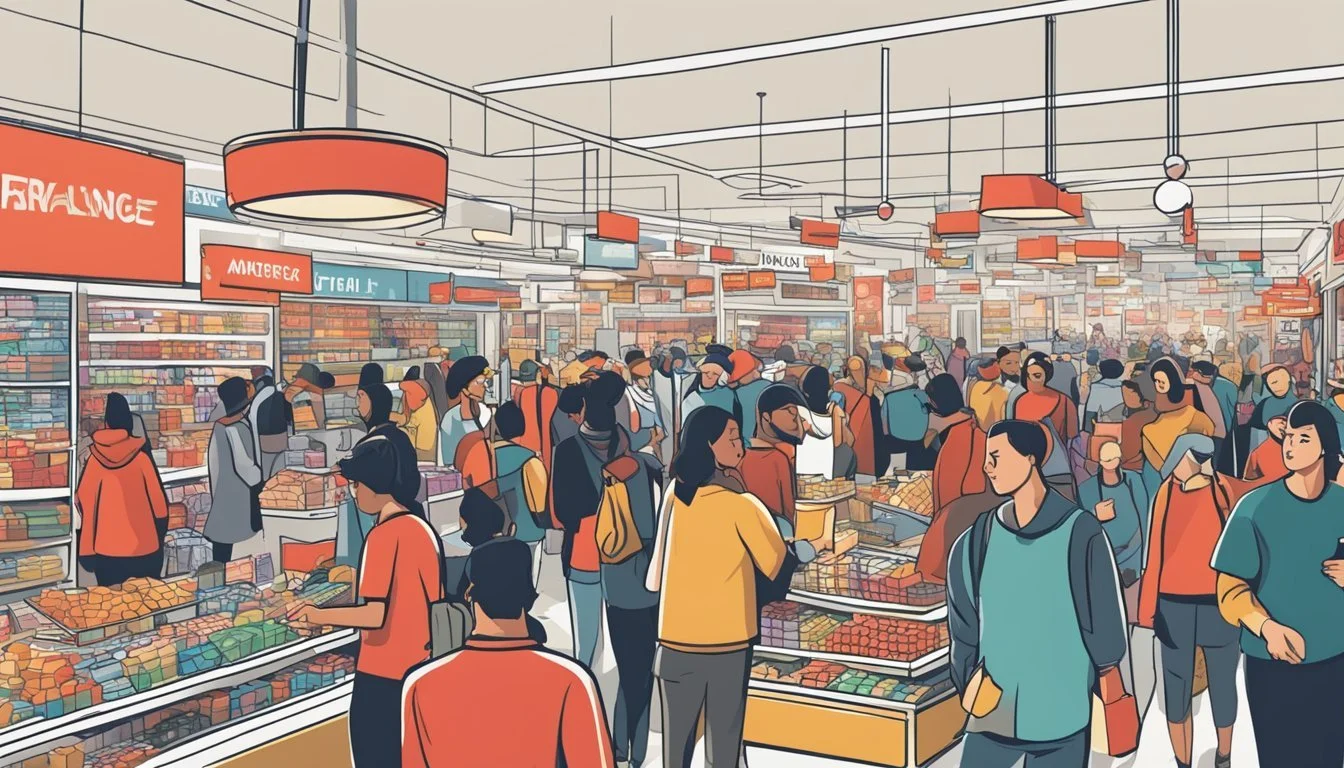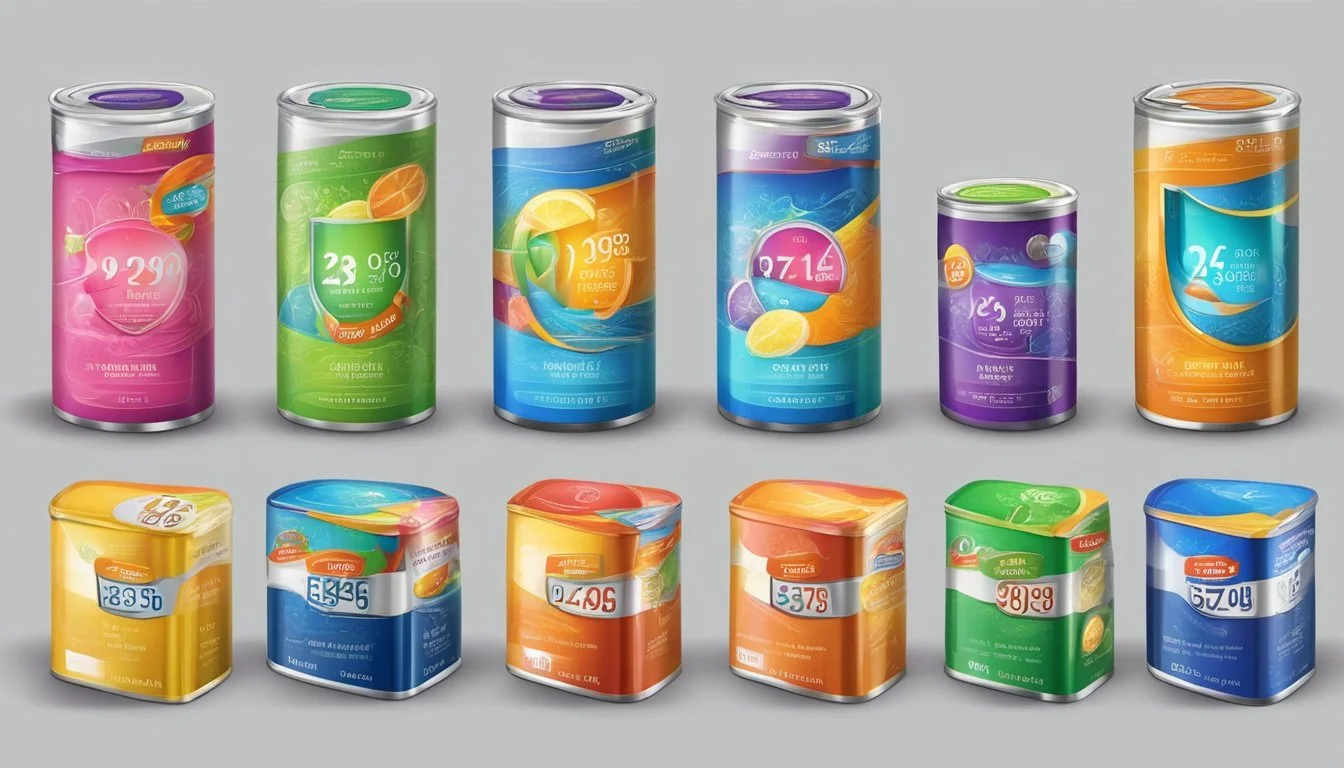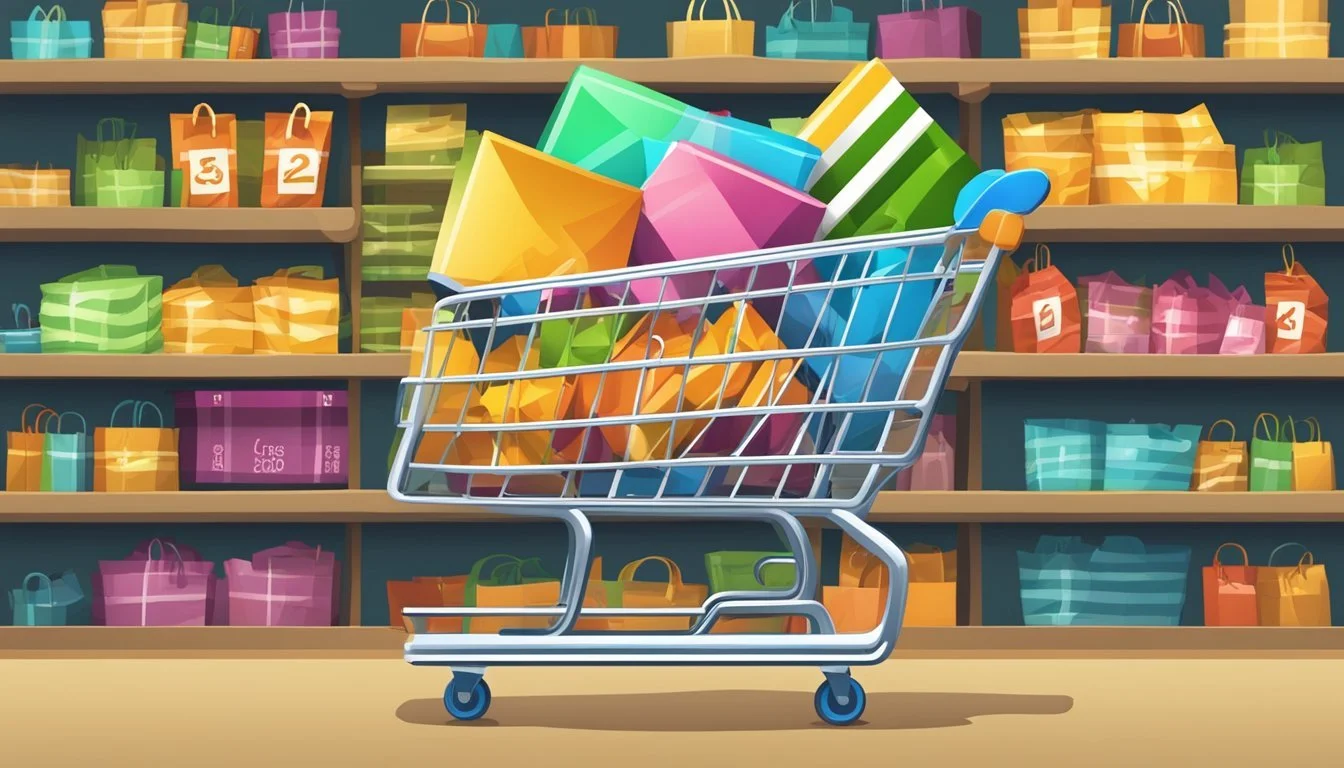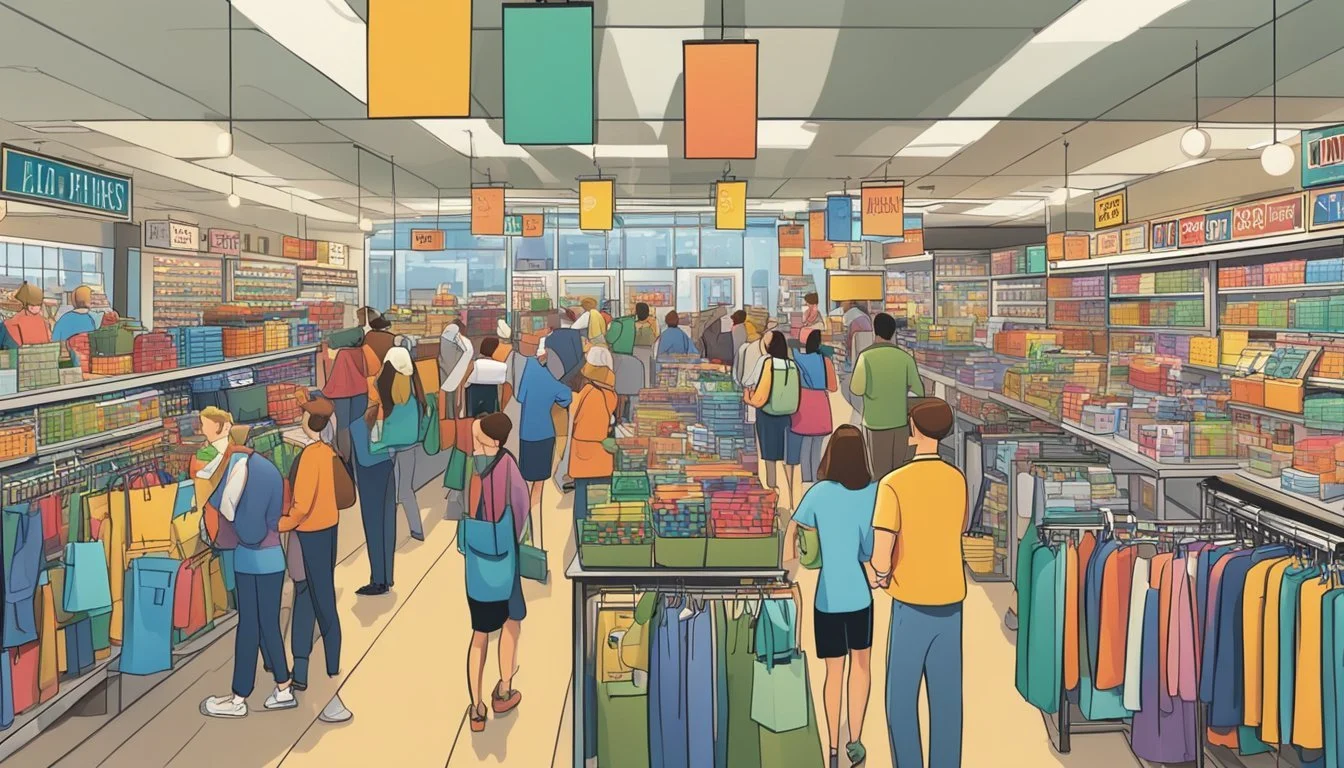12 Psychological Pricing Tricks That Make You Spend More
Unveiling Retail's Secret Weapons
Pricing strategies play a crucial role in consumer behavior and purchasing decisions. Retailers and marketers employ various psychological tactics to influence how shoppers perceive value and encourage them to spend more money. These techniques tap into human psychology, exploiting cognitive biases and emotional triggers that often go unnoticed by the average consumer.
Understanding these psychological pricing tricks can help shoppers make more informed decisions and potentially save money. From the strategic use of numbers to clever product placement and marketing language, businesses have developed a wide array of methods to subtly nudge customers towards higher spending. Recognizing these tactics empowers consumers to approach their purchases with greater awareness and resist impulsive buying behaviors.
1) Charm Pricing
Charm pricing is a popular psychological tactic used by retailers to influence consumer behavior. This strategy involves setting prices just below a round number, typically ending in .99 or .95.
The principle behind charm pricing is that consumers tend to focus on the leftmost digit of a price. For example, $3.99 is perceived as significantly cheaper than $4.00, even though the difference is only one cent.
This pricing method takes advantage of the way our brains process numerical information. Consumers often round down rather than up when evaluating prices, leading them to perceive the item as more affordable.
Retailers frequently use charm pricing to create the illusion of a bargain. This can trigger impulse purchases and make customers feel they are getting a good deal.
Research has shown that charm pricing can be effective in increasing sales. Many consumers are more likely to purchase an item priced at $9.99 than the same item at $10.00.
While charm pricing is widespread, its effectiveness can vary depending on the product and target market. Some high-end brands may avoid this tactic to maintain a premium image.
2) Odd Pricing
Odd pricing is a common psychological pricing strategy used by retailers to influence consumer perception and behavior. This technique involves setting prices that end in odd numbers, typically 9 or 5.
The most prevalent form of odd pricing is charm pricing, where prices end in .99. For example, an item priced at $9.99 instead of $10.00. This small difference can have a significant impact on how consumers perceive the price.
Research suggests that consumers tend to round down when they see prices ending in .99. They focus on the left digits, perceiving $9.99 as closer to $9 than $10. This mental shortcut can lead to increased sales and higher perceived value.
Odd pricing can also create an impression of discounted or bargain prices. Consumers often associate prices ending in 9 or 5 with sales or special offers, even when no actual discount is applied.
Retailers use this strategy across various price points, from low-cost items to higher-priced goods. It's particularly effective in competitive markets where small price differences can influence purchasing decisions.
3) Price Anchoring
Price anchoring is a powerful psychological pricing strategy that influences consumer perception of value. This technique involves presenting a higher-priced item alongside a target product to make the latter seem more affordable.
Retailers often display premium products next to standard offerings. The higher price of the premium item serves as an anchor, making the standard option appear more reasonable by comparison.
This tactic can be observed in various settings, from electronics stores to restaurants. For example, a wine list might feature an expensive bottle to make mid-range options seem like better values.
Price anchoring can also be applied through strikethrough pricing. By showing an original higher price crossed out next to a new lower price, businesses create a sense of savings for customers.
The effectiveness of price anchoring lies in its ability to shift consumer focus from absolute price to relative value. It leverages the tendency of people to make judgments based on comparative information rather than intrinsic worth.
4) Bundling
Bundling is a pricing strategy that combines multiple products or services into a single package deal. This tactic encourages customers to purchase more items than they initially intended.
Retailers often bundle complementary products together, such as a camera with a memory card and case. The perceived value of the bundle often exceeds the sum of its individual parts.
Consumers may feel they're getting a bargain, even if they didn't plan to buy all the bundled items. This technique can lead to increased sales and higher average transaction values for businesses.
Software companies frequently use bundling by offering suites of programs at a discounted rate compared to buying each application separately. This approach can make customers feel they're getting more for their money.
Bundling can also create a sense of urgency or exclusivity. Limited-time bundle offers can prompt buyers to make quicker purchasing decisions to avoid missing out on perceived savings.
While bundling can provide genuine value, it's important for consumers to evaluate whether they truly need all items in a bundle before making a purchase. Careful consideration can help avoid unnecessary spending on unwanted products.
5) Flash Sales
Flash sales create a sense of urgency and scarcity that can compel consumers to make quick purchasing decisions. These limited-time offers typically feature steep discounts on select items for a brief period, often lasting just a few hours.
The time pressure of flash sales triggers fear of missing out (FOMO) in shoppers. This psychological response can override rational decision-making processes, leading people to buy items they may not have otherwise considered.
Retailers strategically time flash sales to capitalize on peak shopping periods or slow business days. They may also use countdown timers or limited stock indicators to heighten the perceived scarcity of products.
Flash sales often encourage impulse buying by presenting unexpected deals on desirable items. The combination of discounts and time limits can make shoppers feel they're getting an exceptional value, even if they hadn't planned to make a purchase.
While flash sales can offer genuine savings, they can also lead to overspending if consumers don't carefully consider their needs and budget before participating. The excitement of scoring a deal may overshadow practical considerations about the necessity of the purchase.
6) Buy One Get One Free
Buy One Get One Free (BOGO) deals are a popular pricing strategy used by retailers to entice customers into making larger purchases. These promotions create the illusion of getting something for nothing, which can be highly appealing to shoppers.
BOGO offers often lead consumers to buy more than they initially intended. Even if someone only needs one item, the prospect of getting a second one at no additional cost can be hard to resist.
This tactic can be particularly effective for perishable goods or items with a limited shelf life. Customers may feel compelled to take advantage of the deal before it expires, even if they don't immediately need the extra product.
Retailers benefit from BOGO promotions in multiple ways. They can clear out excess inventory, introduce customers to new products, or simply increase sales volume. The perceived value of the deal often outweighs the actual cost to the business.
While BOGO offers can provide genuine savings in some cases, shoppers should carefully consider whether they truly need or will use the additional items. Sometimes, these deals may lead to unnecessary spending or waste if the extra products go unused.
7) Decoy Pricing
Decoy pricing is a clever tactic used by retailers to influence consumer choices. This strategy involves introducing a third option that makes one of the existing choices appear more attractive.
In practice, a company might offer three product variants: small, medium, and large. The medium option is priced significantly higher than the small, while the large is only slightly more expensive than the medium.
This pricing structure nudges customers towards the large option, as it seems to offer better value. The medium size serves as a decoy, making the large appear like a bargain in comparison.
Retailers often apply this technique to various products, from popcorn at movie theaters to subscription plans for streaming services. The decoy effect capitalizes on consumers' tendency to make relative comparisons when evaluating options.
By strategically positioning prices, businesses can guide customers towards higher-priced items or those with better profit margins. This psychological trick subtly influences purchasing decisions, often without buyers realizing it.
8) Reference Pricing
Reference pricing is a strategy retailers use to influence consumer perceptions of value. It involves displaying a higher "reference" price alongside the actual selling price.
This tactic creates the illusion of savings, making customers feel they're getting a good deal. For example, a product might be listed as "$50, originally $100," even if it was never actually sold at $100.
Retailers often use manufacturer's suggested retail prices (MSRP) as reference points. These are typically inflated, allowing stores to offer "discounts" while still maintaining healthy profit margins.
Some businesses employ fictitious reference prices, artificially inflating the original cost to make the current price seem more attractive. This practice, while potentially misleading, can be effective in driving sales.
Reference pricing capitalizes on consumers' tendency to judge value relative to a given benchmark. By providing a higher reference point, retailers can make their actual prices appear more appealing.
This technique is particularly effective in competitive markets where consumers are actively comparing prices. It can create a sense of urgency, prompting buyers to act quickly to take advantage of perceived savings.
9) Scarcity Effect
The scarcity effect is a powerful psychological pricing tactic that capitalizes on the human tendency to value things that are rare or limited. Retailers often use this principle to create a sense of urgency and encourage immediate purchases.
By advertising limited quantities or time-sensitive offers, businesses tap into consumers' fear of missing out. This can lead people to make impulsive buying decisions, even if they hadn't initially planned to purchase the item.
Common examples include "limited edition" products, countdown timers on websites, and phrases like "while supplies last" or "only 3 left in stock." These tactics create artificial scarcity, making products seem more desirable and valuable.
The scarcity effect can also be applied to services, such as exclusive memberships or limited-time promotions. When consumers believe they have a rare opportunity, they're more likely to act quickly and spend more.
Businesses may combine scarcity with other pricing strategies, like offering a discount for a short period. This dual approach can be particularly effective in driving sales and creating a sense of excitement around a product or service.
10) Free Shipping
Free shipping offers can significantly influence consumer purchasing decisions. Many shoppers are drawn to the allure of not paying extra for delivery, even if the item's base price is slightly higher.
Retailers often set minimum purchase thresholds to qualify for free shipping. This tactic encourages customers to add more items to their cart to reach the required amount.
Some businesses build shipping costs into product prices, then advertise "free shipping" as a perk. This strategy makes shoppers feel they're getting a better deal, even if the total cost remains the same.
Free shipping can also reduce cart abandonment rates in online shopping. Customers who see unexpected shipping charges at checkout are more likely to leave without completing their purchase.
Seasonal or limited-time free shipping promotions create a sense of urgency. This compels shoppers to make purchases sooner rather than later to take advantage of the offer.
11) Time-Limited Offers
Time-limited offers create a sense of urgency that compels consumers to make quick purchasing decisions. Retailers often use countdown timers or limited-time sales to capitalize on this psychological trigger.
These offers tap into the fear of missing out (FOMO), making customers worry they'll lose the chance to get a good deal. This anxiety can override rational decision-making processes, leading to impulse purchases.
Flash sales and daily deals are common examples of time-limited offers. They generate excitement and encourage immediate action. Customers may buy items they don't need simply because the opportunity seems too good to pass up.
Seasonal sales, like Black Friday or Cyber Monday, also fall into this category. These events create a frenzied atmosphere where shoppers feel pressured to buy quickly before products sell out.
Some retailers use artificial scarcity by limiting the quantity of items available during a sale. This combines time pressure with the fear of limited supply, further motivating hasty purchases.
Time-limited offers can be particularly effective in e-commerce, where it's easy to display countdown timers and update inventory in real-time. This visual reinforcement of urgency can significantly boost sales conversions.
12) Prestige Pricing
Prestige pricing is a psychological tactic that targets consumers' desire for luxury and status. This strategy involves setting prices significantly higher than similar products to create an perception of superior quality or exclusivity.
Luxury brands often employ prestige pricing to appeal to affluent customers and those aspiring to project a wealthy image. The high price tag becomes part of the product's allure, signaling to buyers that they're purchasing something special.
Companies using this approach carefully cultivate brand image and exclusivity to justify premium prices. They may limit production quantities or distribution channels to enhance the sense of scarcity and desirability.
Prestige pricing can be effective across various industries, from fashion and jewelry to high-end electronics and automobiles. The strategy relies on consumers associating higher prices with better quality, craftsmanship, or social status.
While some shoppers seek out prestige-priced items for their perceived value, others may overspend in an attempt to elevate their social standing or feel more successful. This psychological trick can lead consumers to make purchases based on emotional factors rather than practical considerations.
Understanding Psychological Pricing
Psychological pricing leverages consumer psychology to influence purchasing decisions. It taps into cognitive biases and emotional triggers that shape how people perceive value and make choices.
The Concept of Psychological Pricing
Psychological pricing uses strategic price points to create a perception of better value. Common tactics include charm pricing, where prices end in .99 to appear lower than rounded numbers. Retailers may also use prestige pricing, setting high prices to signal quality.
Anchoring is another key concept. By presenting an expensive option first, other prices seem more reasonable in comparison. Bundle pricing groups items together at a discount to increase perceived value.
Some businesses employ odd-even pricing. Odd prices like $9.99 are perceived as discounts, while even prices like $100 suggest quality. The left-digit effect causes people to focus on the first digit, making $3.99 feel closer to $3 than $4.
Behavioral Economics and Consumer Behavior
Behavioral economics examines how psychological factors influence economic decisions. Loss aversion plays a significant role - people fear missing out on deals more than they desire savings. This drives urgency around limited-time offers.
Consumers often struggle with innumeracy, finding it challenging to compare prices effectively. This can lead to overspending when faced with complex pricing structures or bulk "deals" that may not offer real savings.
Emotional appeals in marketing can override rational decision-making. Brands may evoke feelings of joy, adventure, or family to encourage purchases. Social proof, like displaying popular items, taps into the desire to follow others' choices.
Framing effects show how presenting the same information differently impacts decisions. A product framed as "20% off" may be more appealing than one advertised as "80% of the original price," even though the end price is identical.
The Science Behind Pricing Tricks
Psychological pricing tactics leverage cognitive biases and emotional triggers to influence consumer behavior. These strategies tap into subconscious mental processes that shape our perception of value and purchasing decisions.
Neuromarketing Insights
Brain imaging techniques reveal how pricing affects neural activity. fMRI scans show increased activation in reward centers when consumers encounter discounts or perceive a good deal. This releases dopamine, creating positive associations with the purchase.
Price anchoring activates the prefrontal cortex, influencing how we judge subsequent prices. The brain uses the anchor as a reference point, making slightly lower prices seem more attractive.
Eye-tracking studies indicate that consumers fixate longer on prices ending in 9, suggesting increased cognitive processing. This extra attention can lead to higher purchase intent for these items.
The Role of Emotions in Purchase Decisions
Emotional responses often override logical reasoning in buying choices. Anticipation of owning a product triggers the nucleus accumbens, associated with pleasure and reward.
Fear of missing out (FOMO) activates the amygdala, driving impulse purchases. Limited-time offers exploit this by creating a sense of urgency.
Positive emotions linked to brands or marketing messages activate the ventromedial prefrontal cortex. This brain region integrates emotions into decision-making, potentially overriding price considerations.
Social proof, like customer reviews, stimulates the posterior superior temporal sulcus. This brain area processes social cues, influencing our perception of a product's value and desirability.
Common Psychological Pricing Strategies
Retailers and marketers employ various pricing tactics to influence consumer behavior and boost sales. These strategies tap into psychological triggers that can lead shoppers to spend more.
Charm Pricing
Charm pricing involves setting prices just below a round number, typically ending in .99 or .95. This technique exploits the left-digit effect, where consumers focus on the first digit of a price.
For example, $3.99 is perceived as significantly cheaper than $4.00, even though the difference is only one cent. The brain tends to anchor on the leftmost digit, making $3.99 feel closer to $3 than $4.
Many businesses use charm pricing extensively. It's particularly common in retail, where items priced at $9.99 or $19.99 are ubiquitous.
Studies have shown charm pricing can increase sales by up to 24% compared to rounded prices. This effect is so powerful that even savvy consumers can fall for it.
Decoy Pricing
Decoy pricing introduces a strategically priced option to guide consumers toward a specific choice. This strategy works by manipulating the perceived value of products or services.
A classic example is movie theater popcorn pricing:
Small: $3.00
Medium: $6.50
Large: $7.00
The medium size acts as a decoy, making the large seem like a better value. Most customers choose the large, even if they initially wanted a smaller size.
Decoy pricing is used in various industries, from subscription services to consumer electronics. It relies on the contrast effect, where the perceived value of an option changes based on available alternatives.
Bundling
Bundling combines multiple products or services into a single package at a discounted price. This strategy encourages customers to buy more items than they initially intended.
Examples of bundling include:
Fast food value meals
Software suites (e.g., Microsoft Office)
Cable TV and internet packages
Bundling works by reducing decision fatigue and creating a perception of savings. Customers feel they're getting a good deal, even if they don't need all the bundled items.
Effective bundles typically include a mix of popular and less popular products. This allows businesses to boost sales of slower-moving inventory while still providing value to customers.





